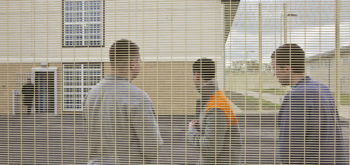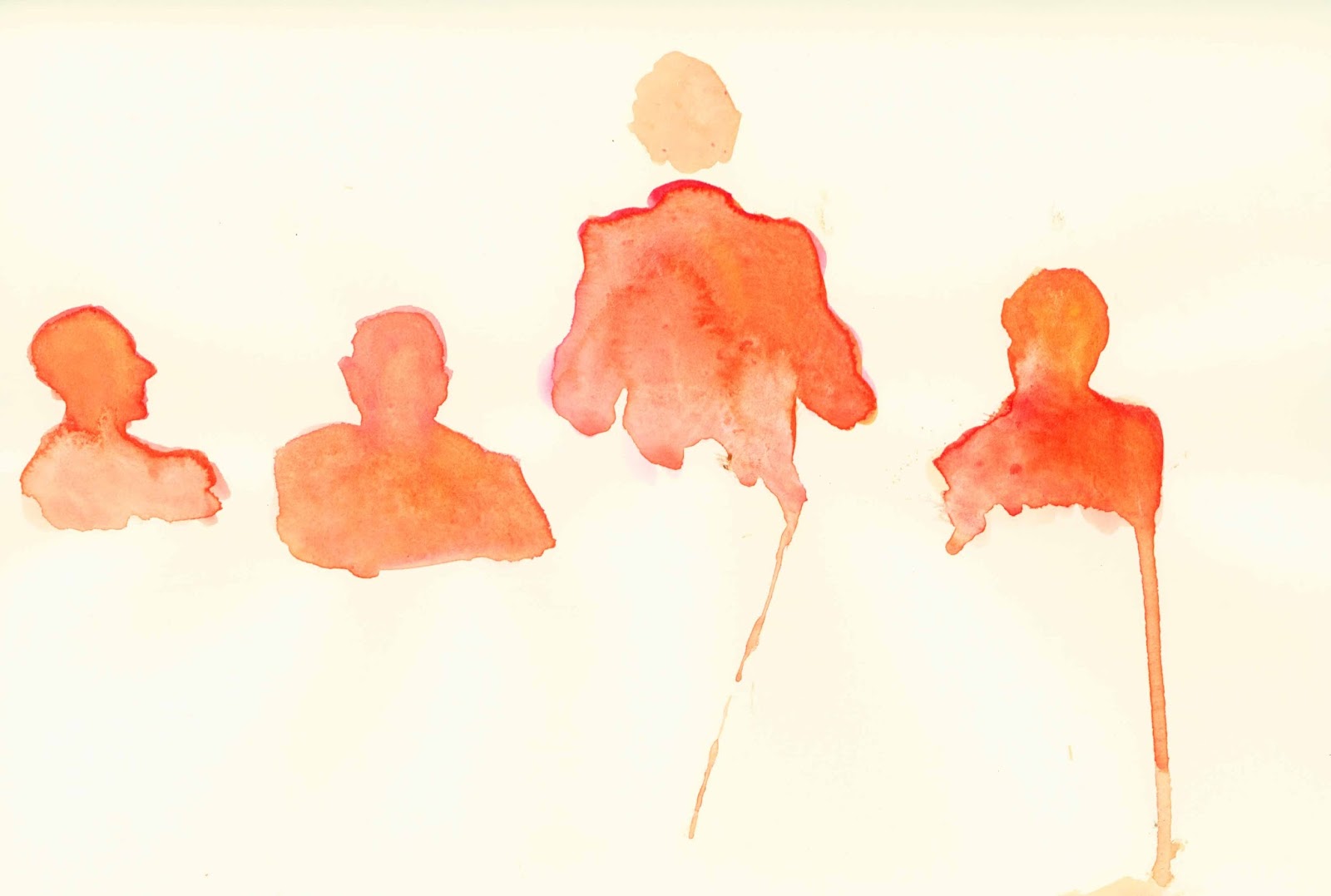[contextly_auto_sidebar id=”jNwA1qvzbe7qKqm2AtVaeYlr6pev4uD0″]
Forensic fibre examination is one of the most established forensic evidence types. It has played a significant role in many of this country’s most high profile and complex cases across a wide range of evidence types, from burglary and car thefts to sexual offences, murder and terrorism. According to the 2009 website of the now defunct government Forensic Science Service textile fibre examination is the ‘second most utilised evidence type after body fluids and DNA, often providing compelling evidence in a variety of cases’. It is one of the most researched and respected of all evidence types amongst the global forensic science community.
- Pic by Ynse, Flickr, under creative comms licence, here
So why is it that the use of fibres as tool in forensic investigations has declined so much that I have had to close our specialist forensic fibre laboratory, Contact Traces?
A fibre examination can provide information to an investigation at any stage. In the investigative stage fibres can provide valuable information such as the type of clothing likely to be worn by a suspect, whether a victim has been smothered, whether a weapon is the murder weapon, the type of vehicle used to transport a body or the textile environment where bombs are being manufactured. The investigative leads provided have the potential to steer an investigation into lines of enquiry that would not otherwise have been discovered by DNA, fingerprints of footwear marks.
In the evidential stage, fibre evidence provides links between surfaces. The value of these links largely depends on the context of the case. In a rape case where the issue is one of consent, the suspect’s and victim’s accounts may differ – for example, one party may state that sexual activity occurred in the bedroom and was consensual, the other party may say the activity occurred in an alleyway and was rape. DNA won’t help in these situations, whereas the presence or absence of fibres from the bedclothes on the victim’s clothing could be used to support the account of one party over another.
There is clearly more to securing convictions than DNA, fingerprints or footwear marks. In cases where there is no clothing available, fibre populations can be used to link vehicles, bombs and suspects to the scene or each other. IEDs were linked to the same bomb-maker through fibres found on the tape used to bind each device, the laboratory’s view was that it was likely that the fibres arose from the same prayer mat used by the bomb maker as he moved from one location to another.
In the case of Stephen Lawrence, a jacket seized at the house of one of the suspects had been examined six times by six scientists from four different Forensic Science Providers (FSPs) over a period of 14 years, the last time as recently as 2007. All tests determined that there was no blood on the jacket. It took the finding of a single red cotton fibre on tapings taken from the jacket (which bore indications of blood during instrumental analysis) to prompt a re–examination of the jacket for blood under the microscope. It is arguable that without a fibre examination that famous blood stain would have remained undiscovered to this day. It is obvious that simply placing all of our forensic eggs in the baskets of DNA, fingerprints, footwear marks and mobile phones is a recipe for failure in significant proportion of cases.
 From an economic perspective there has clearly been a reduction in demand for fibre cases since the police took control over the private market in 2008. To the external observer this may be seen as a natural consequence of market forces, consumers (police forces) not buying a product because either they are buying something else that delivers better value for money or that the product has become obsolete as a result of some technological change.
From an economic perspective there has clearly been a reduction in demand for fibre cases since the police took control over the private market in 2008. To the external observer this may be seen as a natural consequence of market forces, consumers (police forces) not buying a product because either they are buying something else that delivers better value for money or that the product has become obsolete as a result of some technological change.
The microscopic comparison of hair is a good example of a process which has been overtaken by a cheaper, more effective technology – DNA analysis of hair provides a cheaper and more definitive answer to the question of identity of the source of the hair. Handwriting comparisons on the other hand, have seen a reduction in demand because fewer people use handwriting to communicate, directly correlating with the surge in demand for digital forensics.
But the reduction in demand for fibre cases cannot easily be explained by the existence of either a better alternative in the market or by a change in behaviour of the general public. DNA, fingerprints and footwear marks, the staple evidence types in use by police are tools used to address identity; they do little to address activity. Fibre evidence tends to answer questions directly relating to activity. It is common sense but it is worth restating, that in order for a jury to make a judgement they need to know who the offender is and what he is doing. The police seem overly focussed on spending resources on identifying potential offenders, neglecting funding of services necessary to build a robust case against the suspect once they have been identified.
The reduction in demand for fibre cases is not driven by external factors, but wholly internally within police forces. The plunging price of DNA in the UK has had the effect of devaluing all other forensic evidence types, most of whom do not lend themselves to automation or high volume-low cost unit pricing models.
No longer are services viewed on their merit, instead they are viewed on how much more they cost than DNA. Assessing a service based on whether it is of value to the police and whether it is of value to the criminal justice system are two entirely different assessments.
Crime rates are falling. Police forces use that fact as an excuse as to why they are spending less on forensic science, at least those services done by those other than the police themselves. By drawing such a correlation the police are implying that they don’t need to spend as much on forensic science because there are fewer crimes. However, detection rates for offences (i.e solved cases) were 27% 10 years ago in 2005/06 and were only 29% in 2012/13.
Against the background of fewer crimes you might expect the police to be doing far better on their key metric if it is to support an argument for spending less on the tools they use to help them do their job. In fact when crime is falling there is as much an argument for spending more on forensic science than less, particularly when their record in certain areas (e.g. sexual offences) is so poor.
The police will say that times are tough and they have to make difficult decisions on costs. They are right. However whilst they use that argument to justify dropping a spend externally in forensic science from nearly £200 million per year to £60 million over the last decade, it is an argument that is completely undermined by the increased spend on forensic science internally and the grant funding many police forces have received from the government to build laboratories and recruit staff.
The House of Commons Science and Technology Committee couldn’t get to the bottom of police spending on forensic science and neither could the National Audit Office. It is clear that when it comes to determining value for money in forensic science, there are simply no reliable figures on which to draw a proper assessment. All that can be said for certain is that the police are spending far more on internal forensic science than ever and far less on forensic science performed independently of them in laboratories accredited to international standards.
What was the source of demand for fibre cases in the past?
Historically, the demand for fibre cases was driven largely by the scientists working independently of the police. Seeking the most effective way that science can be applied; they sought to answer the questions they understood the court would consider to be significant. They were not merely concerned with identifying potential suspects. The lines were very clearly drawn between police officers and scientists in terms of key strategic decisions relating to forensic science.
Without doubt the advent of DNA changed the landscape, for both police forces and forensic scientists. In the mid 90s, huge resources were ploughed into DNA, scientists previously concerned with fibre examinations and body fluids, found themselves having to adapt to the demands of an increasing DNA caseload. Senior scientists from the pre-DNA era continued to value fibres as an evidence type and promote its use; however changes in their role meant that their skills were employed more as managers of complex enquiries and cold cases, than directly on the laboratory bench. Over time their influence diminished, through retirement and a lack of succession planning by forensic science providers.
The consequence of losing fibres as a necessary skill for new forensic scientists was that now the bulk of those advising police forces in casework had little or no knowledge of fibres. It is impossible to advocate an evidence type if the advocate knows little about it. As a result police forces seeking a strategy from scientists were often told that fibres were of little value and took too long to do, instead being offered very expensive low template DNA services as the only viable option. Police forces felt obliged to take this advice, because more often than not the investigation was so close to trial that there was little time to do anything else.
Considerable sums were spent on low template DNA with little real return, one police force quoted that only 6% of low template DNA analyses returned a full profile. Over a few years, forensic strategies narrowed to a simple strategy of DNA first, and if DNA fails, do DNA again.
Recovery of evidence becomes optional
Over the years laboratories have gradually moved taping of clothing (a process where fibres are recovered from surfaces using clear sticky tape) from a compulsory part of the examination process to an optional requirement. This happened during a period where Forensic Science Providers were quick to lay the blame for increasing costs of examinations and poor turn round times on the time it takes to recover fibres from an item of clothing. This was done without any recognition of the significance of the recovery and the impact such a move would have on criminal investigations.
To allay fears, some Forensic Science Providers introduced a process where the forensic scientist had to determine whether or not it was appropriate to recover fibres from an item of clothing. Initially most scientists took a conservative approach and recovered fibres regardless, however that process did not last and the default position became one of not recovering fibres unless instructed to do so by the customer. This allowed Forensic Science Providers to abrogate their responsibility for fibre recovery to the police. But even when instructed by police to perform fibre tapings, the instruction is not always followed through by laboratories. In one instance in an offence of gang rape, a laboratory did not tape clothing because it was noted on the laboratory form that there was CCTV ‘in the area’. Whilst there was CCTV of the area, there was no CCTV of the actual incident which occurred outside the coverage of the cameras.
The failure to tape clothing makes it very difficult to return to it and attempt fibre recovery later. Fibre evidence will have been lost through the vigorous activity and movement of the exhibit whilst it is searched for blood and other body fluids. Any fibre recovery attempted later will certainly be open to assertions of contamination by the defence. The net effect of choosing not to tape exhibits on fibre demand is considerable. If the opportunity to do fibre examinations is removed from an exhibit, by means of a lack of due diligence, it obviously reduces the demand for fibre cases.
We have seen a growth in the last three years of requests from the defence side of the criminal justice system, seeking to explore fibre links in cases where no fibre evidence has been used previously by the prosecution. More often than not the prosecution laboratory has not recovered fibres. I know of one case where the defence considered exploring an abuse of process argument over the failure of the prosecution Forensic Science Provider to recover fibres by taping. The failure of the prosecution laboratory to tape the exhibits certainly prevented the defence from properly exploring fibre links which may have supported their client’s account of his activities at the scene. The argument was never tested in court for reasons unrelated to forensic science; however the argument itself was not without merit and in the right circumstances could perhaps have succeeded. It would be utterly humiliating for all concerned if a crown court case costing tens (if not hundreds) of thousands of pounds could be lost all for the sake of saving less than £50 off the budget of a police force on the taping of an item of clothing.
 Sadly, the prospect of reform, if there is any, is too late for my company, Contact Traces. We leave behind us less than half a dozen scientists in England and Wales who are deemed competent by their organisations to work on fibre cases. The point I’m making is that since 2010 I estimate that we have lost 85% of our skills base in this vital forensic evidence type, and the volume of fibre cases has decreased by as much as 90%. I have no doubt that of the 71% of crimes that were undetected in 2012/13, a significant proportion of those were undetected because of a failure by police to choose the forensic tools most likely to deliver.
Sadly, the prospect of reform, if there is any, is too late for my company, Contact Traces. We leave behind us less than half a dozen scientists in England and Wales who are deemed competent by their organisations to work on fibre cases. The point I’m making is that since 2010 I estimate that we have lost 85% of our skills base in this vital forensic evidence type, and the volume of fibre cases has decreased by as much as 90%. I have no doubt that of the 71% of crimes that were undetected in 2012/13, a significant proportion of those were undetected because of a failure by police to choose the forensic tools most likely to deliver.
This matters because when catching the Suffolk Strangler Steve Wright, the FSS had six scientists work full time on that one case for 18 months. Without fibre evidence, the culprit would not have been linked forensically to the killings of some of his victims. Without fibre evidence, James Campbell, a violent and serial sexual offender would have been released back into the public. As a nation we do not have the resource available to us now that the FSS had in 2008 – even if we were able to combine all the resources from all the FSPs together.
We are one serial violent offender away from a huge miscarriage of justice, and a couple of retirements away from a complete and utter collapse of fibre skills in England and Wales.
In my opinion, the answer does not lie in turning the clock backwards to a large generalist public sector laboratory like the Forensic Science Service, nor in turning to private laboratories attempting and generally failing to operate the same model. It lies somewhere else. The solution requires political courage and innovation, but first and foremost with the acknowledgement that the current system is broken and in need of immediate reform.
The UK was once a world leader in forensic fibre examinations. As a nation we deserve better. It is not too late to return fibres to the forensic armoury and regain our world class reputation in forensic fibre examination, the criminal justice system demands that we do.







